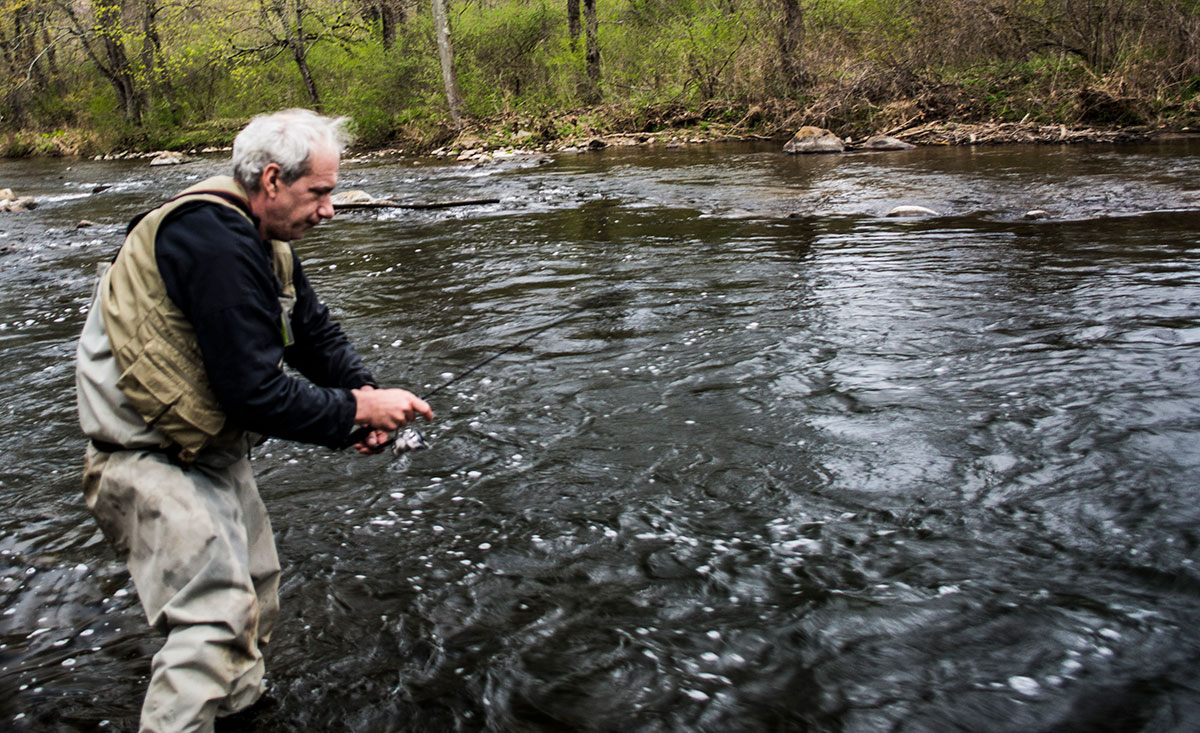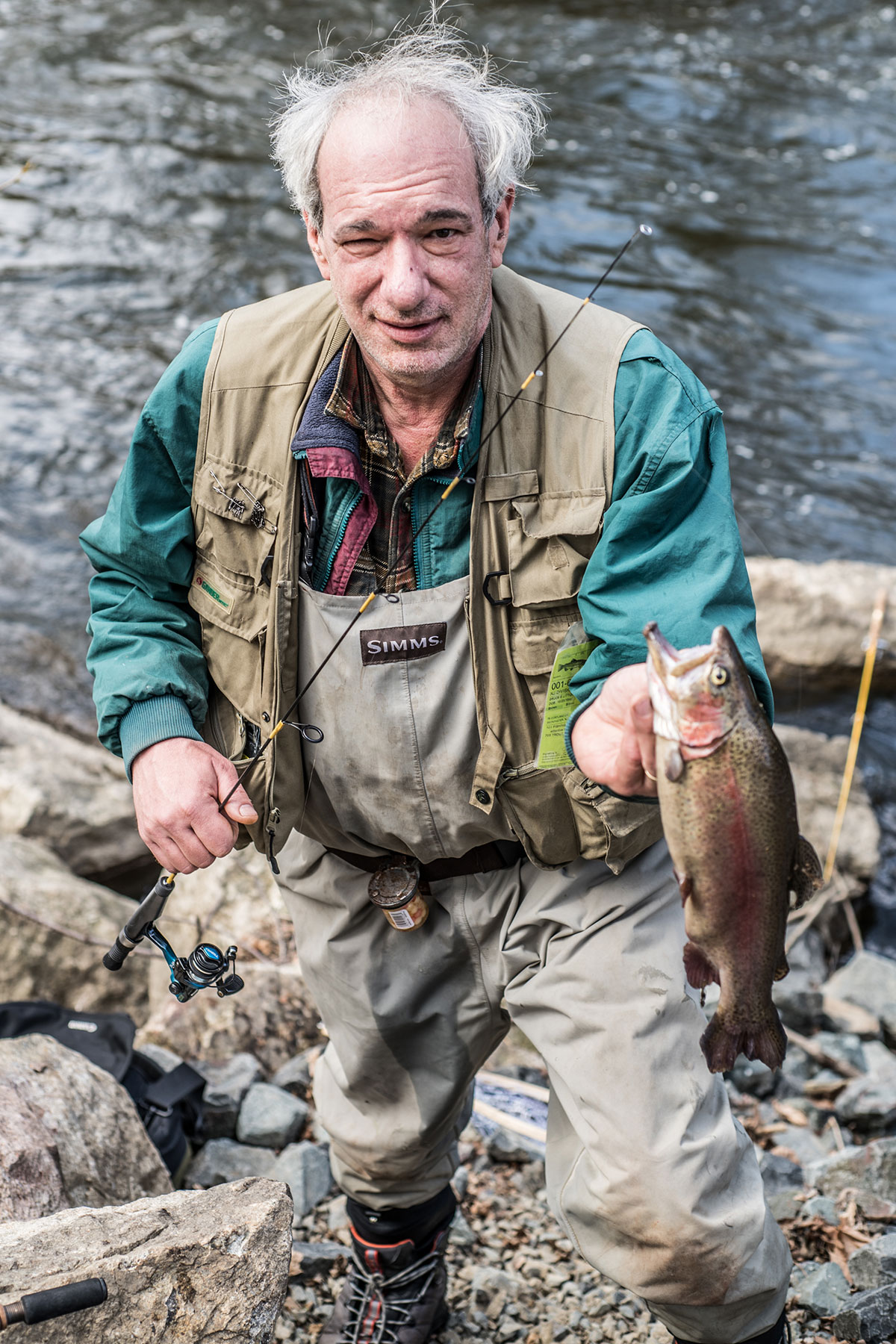
Lighten up and enjoy the stream-side battle!
I’ve been called a 1970s throwback for using salmon eggs. The same metal Egg Lug I used then I use now, but the company making them went out of business decades ago. You can buy a plastic version from Pautzke, but a metal one from the 70s may be worth the cost on eBay. To fish eggs, you will need an Egg Lug of either sort.
As for eggs themselves, go with Atlas Mike’s. Larger than Pautzke, any of Mike’s work is about the same. Use pale colors for clear water and red eggs for stained. Put a pinch of salt into a jar to harden the eggs a little so they stay on the hook.
Most fishermen call the trout stockies. Don’t mind my calling them stockers. The “er” suffix gives the word a hard edge I like. I’ve caught stockers using salmon egg techniques every decade inclusive of the 70s. Why complain about 10-inch trout in the springtime when you can scale back the tackle? One of my microlight rods is 3-1/2 feet long, paired with a 500 series spinning reel spooled with 1-pound test Suffix mono; the other is 3 feet, 9 inches, the reel 500 series, the line 2-pound test P-Line fluorocarbon.
I’ve been criticized for using light Suffix, as if line that light will kill trout from lactic acid buildup during the fight; but although trout run and take drag, it’s not that difficult to get them in. Besides, most of the salmon egg fishing is in April, when the water remains especially cold, and lactic acid builds up as a result of rising water temperature. I caught a 16-inch rainbow on the first outing. I tried the lighter line, having to maneuver the fish through a strong current on the Musconetcong River in New Jersey. Which test to use is almost arbitrary, although 1 pound will cast a little further. My brother Rick uses 4-pound test, and he catches as many as I do on eggs. He quit 2-pound test after a 26-inch rainbow gave him a hard time, though he did land and measure the trout.

Don’t confuse the little rods with ice fishing rods. The 3-1/2-footer I made from components could have served as a lengthy ice fishing rod, but I sanded the tip. That got rid of strike-indicating green paint and gave the rod additional fast-action play. You could still say the rod is all but identical to an ice fishing rod, but microlight as a state of mind and an exercise of working a stream or river is not ice fishing, so what’s the point?
Besides, the other rod which I bought that was advertised for trout and panfish with tip so light I wanted to know if the design can be preserved; the rod having been off the market for years, so while on vacation, I took it to Hatteras Jack, a rod building outfit, told I could have a dozen identical blanks for $700. I didn’t close on the deal, but it felt very reassuring that maybe it can be done.
Taking size 18-14 (smaller to larger) snap-swivels, cut the swivels from snaps with clippers. Put broken swivels on a safety pin and attach that to your vest. Slow water requires no more additional weight on a 1- or 2-pound-test leader than a snap connecting the loop to the mainline. Putting a cut swivel, maybe two or three, onto the snap provides additional weight where needed. A BB split shot is rarely called for.
Microlight fishing is all about drift. You want to achieve, by using weight as outlined above, the eventuality of a salmon egg drifting naturally through the current. Use no larger than a size 14 hook. Some fishermen insist on gold salmon egg hooks, but I gave up on those decades ago. Gold gets disguised by an egg’s color, but the bronze finish of an Eagle Claw size 14 baitholder doesn’t spook stockers. Bend down the barb that would penetrate the mouth to make unhooking trout easy.
Bruce Litton’s book “Microlight: Trout, Adventure, Renewal” will be available soon.



